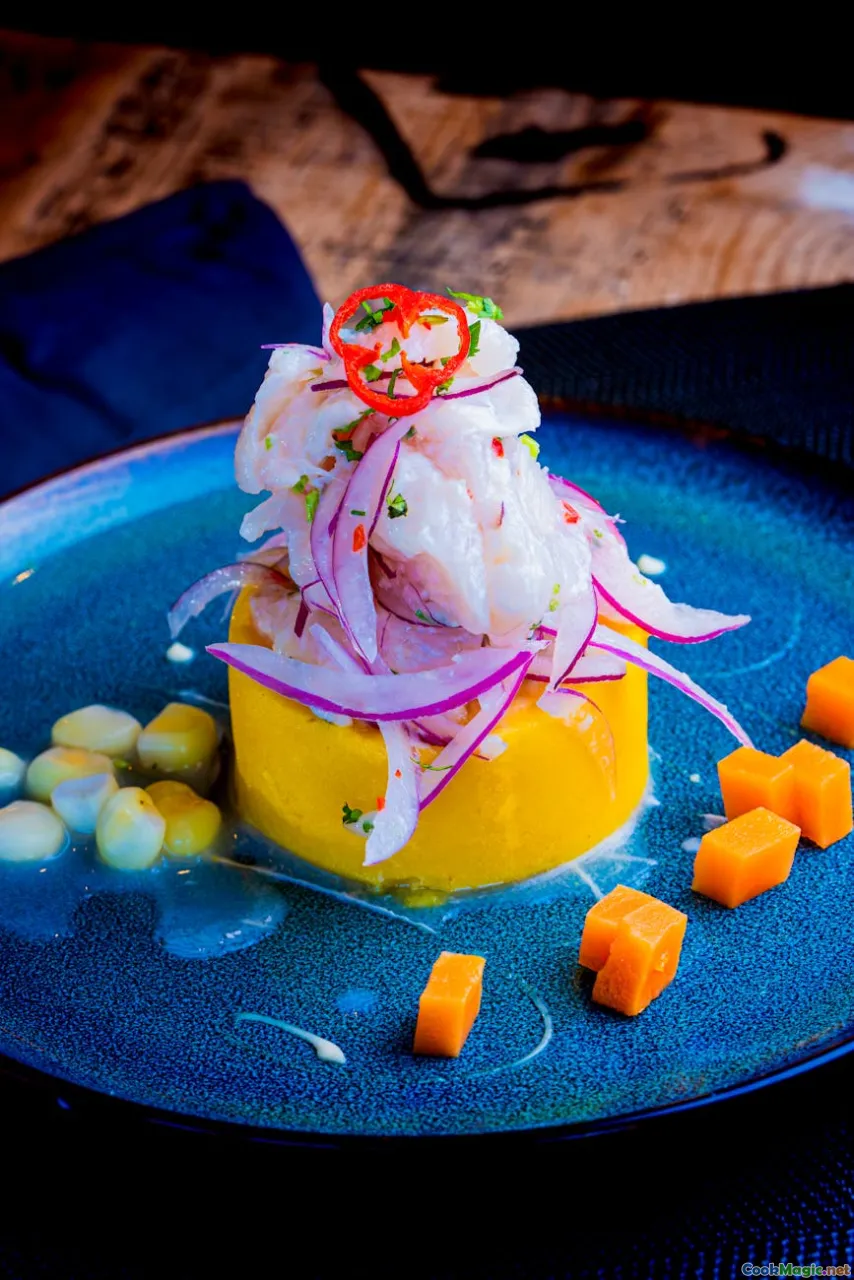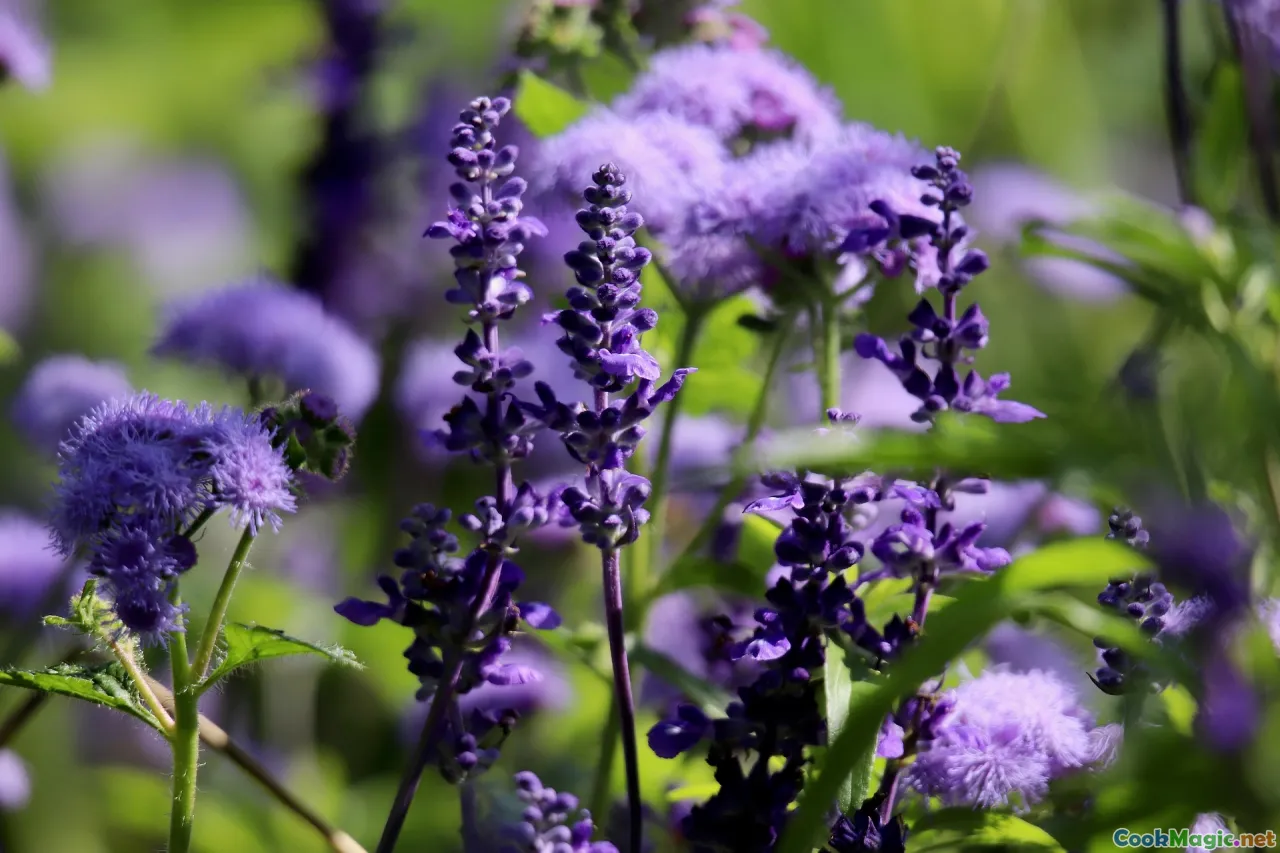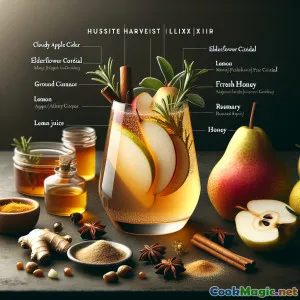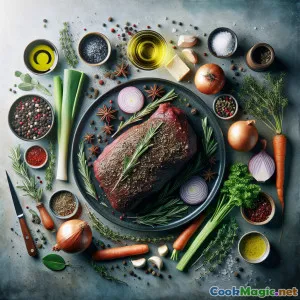
Knuspriges Blaumais-Salbei-Frybread mit Kräuterakzent
(Crisp Blue Corn Sage Frybread with Herbal Flare)
(0 Bewertungen)0
1,179
Juli 16, 2025
Problem melden
Zutaten
-
180 grams Blauer Maismehl
(Verleiht erdige Süße und eine ausgeprägte Farbe)
-
120 grams Weißmehl
(Hilft bei der Struktur)
-
10 grams Frische Salbeiblätter
(Fein gehackt für aromatischen Geschmack)
-
3 grams feines Meersalz
(Gleicht die Aromen aus)
-
7 grams Backpulver
(Für eine leichte, luftige Konsistenz)
-
120 grams Griechischer Joghurt
(Fügt Cremigkeit und Feuchtigkeit hinzu)
-
100 ml Vollmilch
(Hilft, den Teig zu binden)
-
250 ml Pflanzenöl
(Flachbraten)
-
15 grams Butter
(Zum Bestreichen des warmen Brötchens)
-
2 grams Grobes Meersalz
(Auf das heiße Brötchen streuen zum Abschluss)
(Verleiht erdige Süße und eine ausgeprägte Farbe)
(Hilft bei der Struktur)
(Fein gehackt für aromatischen Geschmack)
(Gleicht die Aromen aus)
(Für eine leichte, luftige Konsistenz)
(Fügt Cremigkeit und Feuchtigkeit hinzu)
(Hilft, den Teig zu binden)
(Flachbraten)
(Zum Bestreichen des warmen Brötchens)
(Auf das heiße Brötchen streuen zum Abschluss)
Nährwerte
- Portionen: 4
- Portionsgröße: 1 Runde (etwa 100g)
- Calories: 550 kcal
- Carbohydrates: 60 g
- Protein: 20 g
- Fat: 25 g
- Fiber: 5 g
- Sugar: 5 g
- Sodium: 500 mg
- Cholesterol: 30 mg
- Calcium: 150 mg
- Iron: 2.5 mg
Anweisungen
-
1 - Teigzutaten vorbereiten:
In einer großen Schüssel kombiniert man blaue Maismehl, Allzweckmehl, fein gehackte Salbeiblätter, feines Meersalz und Backpulver.
-
2 - Vermengen Sie die feuchten Zutaten:
In einem Krug den griechischen Joghurt und die Vollmilch verquirlen, bis die Mischung sehr glatt ist.
-
3 - Den Teig Machen:
Gießen Sie die Joghurt-Milch-Mischung in die trockenen Zutaten. Mischen Sie mit einer Gabel oder den Händen, bis ein feuchter, weicher Teig entsteht. Vermeiden Sie es, den Teig zu überarbeiten, da er sonst das Brot zäh machen kann.
-
4 - Ruhephasen und Teig formen:
Stellen Sie die Schüssel abgedeckt beiseite und lassen Sie den Teig 5 Minuten ruhen. Teilen Sie ihn dann in 4 gleich große Stücke. Mit leicht eingeölten Händen drücken Sie jedes Stück zu einem flachen Kreis mit etwa 12 cm Durchmesser und 1 cm Dicke.
-
5 - Öl erhitzen:
In einer schweren Pfanne das Pflanzenöl bei mittlerer bis hoher Hitze erhitzen, bis es schimmert, aber nicht raucht.
-
6 - Teig fryen:
Legen Sie vorsichtig eine oder zwei Portionen gleichzeitig in das heiße Öl. Frittieren Sie sie 2-3 Minuten auf einer Seite, bis sie aufgebläht und goldbraun sind, dann wenden und die andere Seite frittieren. Sie sollten an den Rändern knusprig und in der Mitte zart sein. Verwenden Sie eine Zange, um sie auf einem mit Papiertüchern ausgelegten Rost zu entfernen.
-
7 - Fertigstellen und Servieren:
Nach Wunsch die warmen Frybreads mit geschmolzener Butter bestreichen und mit grobem Meersalz bestreuen. Warm servieren, wie sie sind, oder mit Kräuterjoghurt, Honig oder herzhaften Aufstrichen begleiten.
In einer großen Schüssel kombiniert man blaue Maismehl, Allzweckmehl, fein gehackte Salbeiblätter, feines Meersalz und Backpulver.
In einem Krug den griechischen Joghurt und die Vollmilch verquirlen, bis die Mischung sehr glatt ist.
Gießen Sie die Joghurt-Milch-Mischung in die trockenen Zutaten. Mischen Sie mit einer Gabel oder den Händen, bis ein feuchter, weicher Teig entsteht. Vermeiden Sie es, den Teig zu überarbeiten, da er sonst das Brot zäh machen kann.
Stellen Sie die Schüssel abgedeckt beiseite und lassen Sie den Teig 5 Minuten ruhen. Teilen Sie ihn dann in 4 gleich große Stücke. Mit leicht eingeölten Händen drücken Sie jedes Stück zu einem flachen Kreis mit etwa 12 cm Durchmesser und 1 cm Dicke.
In einer schweren Pfanne das Pflanzenöl bei mittlerer bis hoher Hitze erhitzen, bis es schimmert, aber nicht raucht.
Legen Sie vorsichtig eine oder zwei Portionen gleichzeitig in das heiße Öl. Frittieren Sie sie 2-3 Minuten auf einer Seite, bis sie aufgebläht und goldbraun sind, dann wenden und die andere Seite frittieren. Sie sollten an den Rändern knusprig und in der Mitte zart sein. Verwenden Sie eine Zange, um sie auf einem mit Papiertüchern ausgelegten Rost zu entfernen.
Nach Wunsch die warmen Frybreads mit geschmolzener Butter bestreichen und mit grobem Meersalz bestreuen. Warm servieren, wie sie sind, oder mit Kräuterjoghurt, Honig oder herzhaften Aufstrichen begleiten.
Mehr über: Knuspriges Blaumais-Salbei-Frybread mit Kräuterakzent
Blue Corn Sage Frybread — Imbued with Earthiness and Tradition
A culinary departure from the conventional, Blue Corn Sage Frybread is an aromatic reinvention of classic skillet breads, marrying bold British-style bread craft with centuries-old Native American ingredients and herbaceous notes from fresh sage. This unique fusion celebrates both the versatility of blue cornmeal, famous for its nutty sweetness and striking color, and the fragrant subtlety of sage—an herb adored in English cuisine.
A Journey of Ingredients
What sets blue corn apart isn’t just its vibrant hue: this heirloom grain is revered for a higher proportion of protein and antioxidants compared to yellow corn, resulting in a mildly sweet, almost floral undertone in baked goods. Pairing this with sage gives the frybread a haunting, savory twist, perfect for those who delight in herbal flavors and crave a break from typical comfort breads.
This recipe welcomes a British touch with Greek yogurt, which offers both moisture and richness, akin to the cream-enhanced doughs of traditional scones but without crossing into pastry territory. The result? Bread with a plush crumb, a golden and crisped exterior, and many delicate herbal flecks punctuating every bite.
Preparation and Cooking Tips
- Handle Gently: For the lightest texture, refrain from overmixing your dough—this preserves tenderness.
- Oil Temperature: Ensure the oil is thoroughly hot before adding the rounds; too cool, and the dough will absorb excess oil and become greasy. Medium-high is optimal (around 185°C or 365°F).
- Herbal Variation: Fresh sage animates this frybread, but a touch of fresh thyme or rosemary can harmonize well if sage isn’t available or if want to bolster the herbal essence.
- Toppings: Frybread is immensely adaptable. Enjoy it simply, or brush the finished round with melted butter and a sprinkle of flaky salt. For a modern British or fusion touch, top with roasted pepitas, herbed yogurt, a drizzle of honey, or serve base-style as an accompaniment to robust stews, bean chilis, or sharp cheeses.
Historical and Cultural Resonance
Blue corn, native to the Southwestern United States, carries deep indigenous significance. Known as Hopi maize, blue corn is considered sacred and embodies sustenance, community, and resilience. Frybread itself has a complex ancestry—emerging from the adversity of displacement and ration flour, it was a resourceful creation born within Native American communities during periods of hardship. While England is new to blue corn, the British palate is no stranger to herbal breads or the creative reinterpretation of global ingredients.
By crafting Blue Corn Sage Frybread, we honor the convergence of traditions. British cuisine, famous for its comfort-laden loaves and savory bakes, here fuses respectfully with an Indigenous staple—evocative of the mingling and evolution that characterize modern food culture.
Serving and Storing Suggestions
This frybread shines when served fresh and warm, ideally straight from the pan. Pair as an aromatic snack with afternoon tea, serve alongside robust vegetarian soups, or elevate supper at a picnic. For pre-preparation, you can form the dough rounds ahead and keep covered for up to 2 hours; fry just before serving for maximum crispness.
Store cooled bread, uncovered, for up to 6 hours—reheat on a dry skillet for an encore performance of golden crunch.
Personal Thoughts
Blue Corn Sage Frybread embodies a feast for the senses: earthy blue, sunny gold, a cloud-soft interior, and a whiff of garden sage. Each bite honors what has been and looks forward to what can be, exemplifying Britain’s embrace of culinary diversity at its warmest edge.
























